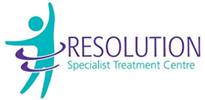If you are considering braces or Invisalign, there is a great deal to consider. You might be wondering which is more effective at straightening teeth, or which is best for your lifestyle. You want to make the right choice, because choosing braces is a big step.
Both Invisalign and traditional braces have their own strengths, but your choice ultimately rests on a few, important factors. Let’s dive into these right now and see which will be best for you.
The Differences
Braces use metal brackets, which are then glued directly to your teeth. Braces are bound together via the use of strong wire and very tiny rubber bands, and this is what helps pull your teeth into the desired position. Although much maligned in TV and movies, modern braces often utilise enamel coloured brackets, which blend with your own teeth for a less noticeable look.
Invisalign braces – as the name suggests – are designed to be invisible. Instead of using metal, Invisalign braces are made from a clear, see-through plastic that fits over your teeth. Moulded using impressions, Invisalign then gently corrects your teeth into the right position. This plastic component is called an ‘aligner tray’ and is easy to remove when needed. When you initially go in for a consultation, a dental technician will take a digital scan and create a 3D model of your teeth. This will then be used to plan a series of aligner trays. You will use one for 2-3 weeks, before moving onto the next. Over the course of this process, your teeth will be gently corrected.
The Pros and Cons of Traditional Braces
Traditional braces are good because they don’t rely on you remembering to wear them – they’re always attached and so always doing their job. With traditional braces, it’s in place until you don’t need it anymore and that’s that.
Another benefit of braces is that they can be used to treat almost any type of stray or misaligned teeth, right up to the most severe cases. Traditional braces offer a very strong, time-tested method for straightening teeth and you don’t need to do anything regarding upkeep other than brushing and flossing regularly.
However, braces can be uncomfortable for some people, due to rubbing of wires and brackets on the gums, which can be doubly frustrating because you know you can’t do anything about it. You may also be unable to eat certain foods and will have to make regular trips to the dentist for tightening.
The Pros and Cons of Invisalign
The major, obvious benefit of Invisalign is that they are very discreet, and they cause much less discomfort than traditional braces.
Cleaning and maintaining Invisalign is also easy, because all you have to do is remove the Invisalign when you eat and then ensure there’s no food debris still in your mouth before popping it back in – you can eat what you want, when you want. Maintenance of Invisalign is easy, with no need for repeat visits to the dentist and, best of all, Invisalign is comparable in price to traditional braces.
The major downside of Invisalign is not really a fault of the system, but more of human nature. It can be easy to forget to put Invisalign braces in, and they need to be worn for up to 22-hours a day to see the best effects.
If you are considering Invisalign for your teeth, contact Resolution Specialist Treatment Centre today. We offer an experienced and friendly service, helping you find the option that is right for you.

